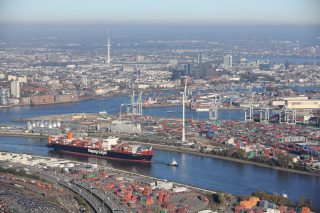The EU Council’s Permanent Representatives Committee approved on June 29 new rules to increase the financial transparency of ports and create fair conditions for access to port services across Europe, confirming the agreement reached with the European Parliament on June 27.
The new rules set out to make ports more efficient and ensure fair competition in the sector, aiming at boosting the competitiveness of European ports both in promoting short sea shipping as an alternative to congested roads and vis-à-vis ports located in non-EU countries.
In addition, more competitive facilities and processes should reduce costs for transport users, according to the Council of the European Union.
The regulation will apply to over 300 seaports covering 96 percent of all freight and 93 percent of all passengers handled by EU ports. Member states are free to decide whether to apply the regulation to other ports as well.
Member states may decide to leave out ports in the comprehensive network located in the outermost regions, such as Réunion, Madeira and the Canary Islands. They may also decide not to apply the rules on the separation of accounts of small ports in the comprehensive network.
When it comes to the different categories of port services, cargo handling and passenger services will be subject to the financial transparency rules, but are exempted from the access provisions. Member states will remain free to decide how to organise these services.
Furthermore, member states and port management bodies will be able to impose certain minimum requirements for the provision of port services and restrict the number of service providers in a limited number of cases set out in the regulation.
The regulation must be formally approved by the European Parliament and then by the Council and this is expected to be completed by the end of this year, according to the Council of the European Union.
|



